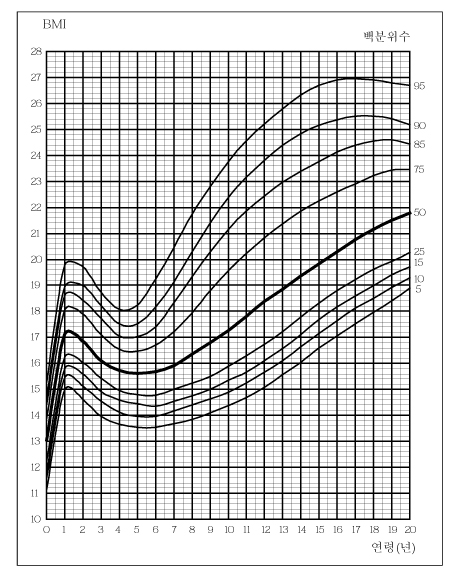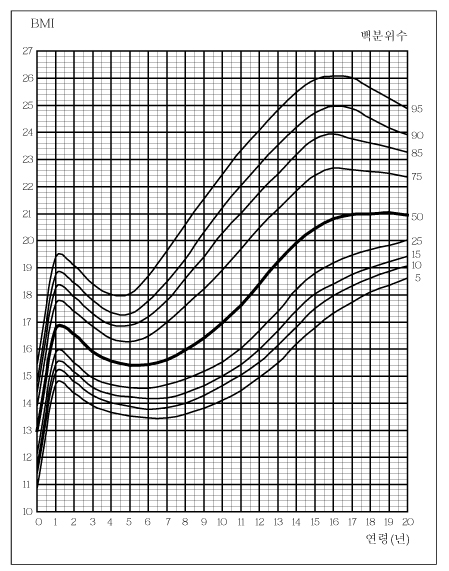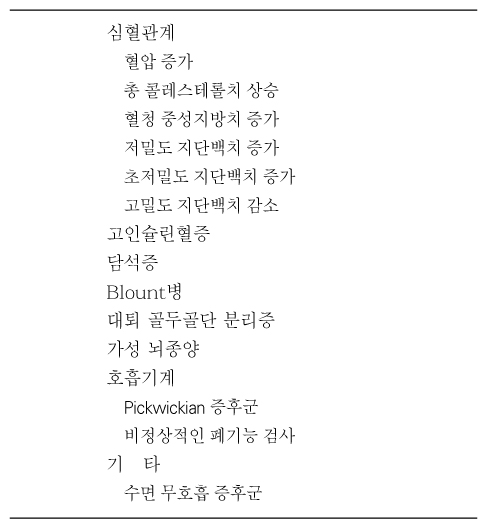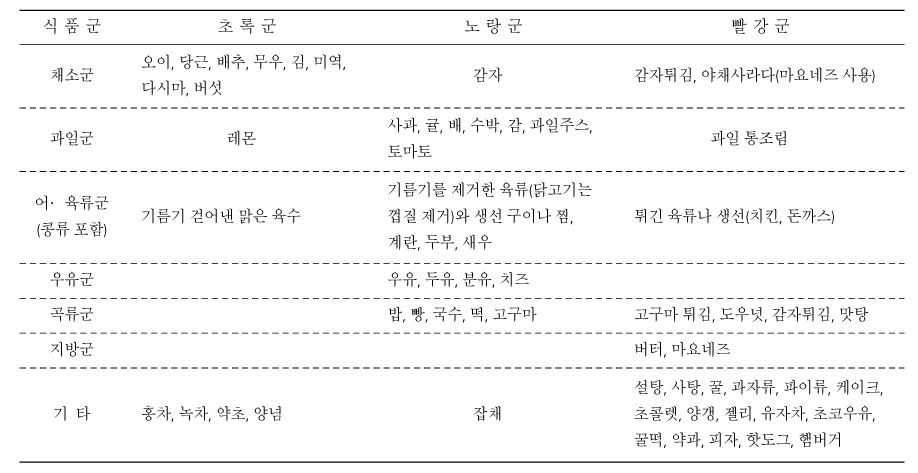 |
 |
- Search
| J Korean Med Assoc > Volume 47(4); 2004 > Article |
Abstract
Due to economic growth, and as lifestyles got more convenient, the number of calories being spent has decreased for two reasons. One is the lack of physical activities and the other is the increased consumption of westernized food. This outbreak of obesity is the highest among the children and the adolescents. Among primary, middle, and high school students in seoul, the prevalence of obesity has increased from 6.2% in 1988 to 17.9% in 2002 in boys, and from 6.5% to 10.9% during the same period in girls. Thus, during the last 14 years, the obesity frequency increased 2.9 times in boys, and 1.7 times in girls. Increase of child obesity is a worldwide tendency. In United States, 20% of all children, 27% of all adolescents, and 33% of all adults are obese. Childhood obesity is catching much attention, because it has physiological and psychological damages for long term as well as for short term. Some of the psychological damages of an obese children are having difficulties with familial and friend relationships, also having a low self-esteem. Although, physiological damages in short term are not clear, the long term damages would have progressed from an early age up to an adult. Detection and treatment of overweight and obesity in childhood are important not only from the aspect of preventive pediatrics, but also the public health that in which include child's physical, social, and psychological health as well as the negative effect it will have on the adults.
References
6. Astrup A, Gotzsche PC, van de, Ranneries C, Toubro S, Buemann B, et al. Meta-analysis of resting metabolic rate in formerly obese subjects. Am J Clin Nutr 1999;69:1117-1122.
7. Bouchard BM, Despres JP, Tremblay A. Genetics of obesity and human energy metabolism. Proc Nutr Soc 1991;50:139-147.
8. Behrman RE, Kliegman RM, Arvin AM. Nelson Textbook of Pediatrics 2004;17th ed. Philadelphia: WB Saunders. 173-177.
9. Canadian Task Force on the Periodic Health Examination. Periodic health examination, 1994 update: 1. Obesity in children. Can Med Assoc J 1994;150:871.
10. Dietz WH, Robinson TN. Assessment and treatment of childhood obesity. Pediatr Rev 1993;14:337-343.
11. Dietz WH. Health consequences of obesity in youth: Childhood predictors of adult disease. Pediatrics 1998;101:Suppl. 518-525.
12. Durnin JV, McKillop FM. The relationship between body build in infancy and percentage body fat in adolescence: A 14 year follow-up on 102 infants. Proc Nutr Soc 1978;37:81A.
13. Davies PS, Gregory J, White A. Energy expenditure in children aged 1.5 to 4.5 years: a comparison with current recommendations for energy intake. Eur J Clin Nutr 1995;49:360-364.
14. Epstein LH, Myers MD, Raynor HA, Saelens BE. Treatment of pediatric obesity. Pediatrics 1998;101:554-570.
15. Fontvieille AM, Kriska A, Ravussin E. Decreased physical activity in Pima Indian compared with Caucasian children. Int J Obes Relat Metab Disord 1993;17:445-452.
16. Fontvieille AM, Harper IT, Ferraro RT, Spraul M, Ravussin E. Daily energy expenditure by five-year-old children, measured by doubly labeled water. J Pediatr 1993;123:200-207.
17. Goran MI, Carpenter WH, Poehlman ET. Total energy expenditure in 4- to 6-yr-old children. Am J Physiol 1993;264:E706-E711.
18. Himes JH, Dietz WH. Guidelines for overweight in adolescent preventive services: recommendations from an expert committee. The Expert Committee on Clinical Guidelines for Overweight in Adolescent Preventive Services. Am J Clin Nutr 1994;59:307-316.
19. Mossberg HO. 40-year follow-up overweight children. Lancet 1989;2:491-493.
20. Poskitt EME, Cole TJ. Do fat babies stay fat? Br Med J 1977;1:7-9.
21. Parsons TJ, Power C, Logan S, Summerbell CD. Childhood predictors of adult obesity: a systematic review. Int J Obes Relat Metab Disord 1999;23:Suppl 8. S1-S107.
22. Ravussin E, Bogardus C. Energy balance and weight regulation : genetics versus environment. Br J Nutr 2000;83:Suppl 1. S17-S20.
23. Sallade JA. Comparison of the psychological adjustment of obese and non-obese children. J Psychosom Res 1973;17:89-96.
24. Hintz RL. In: Brook CGD, Hindmarsh PC, editor. Management of disorders of size. Clinical Pediatric Endorcrinology 2001;4th ed. Iowa: Blackwell Science. 132-136.
25. Wales JK, Wit JM, Rogol AD. Pediatric Endocrinology and Growth 2003;2nd ed. Philadelphia: WB Saunders. 115-130.
- TOOLS
-
METRICS

-
- 1 Crossref
- Scopus
- 981 View
- 4 Download
-
Related articles in
J Korean Med Assoc











